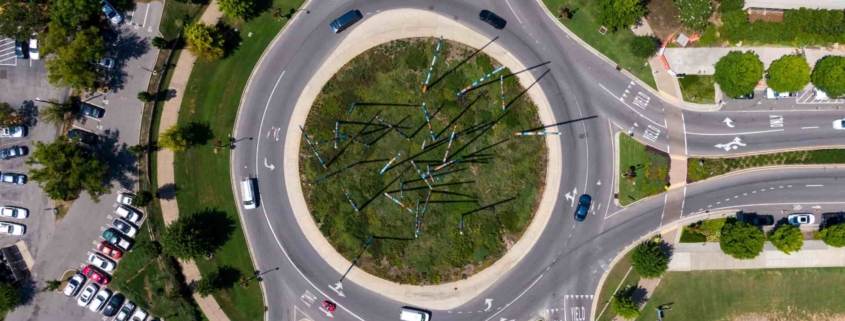Common Causes of Roundabout Accidents
Roundabouts, when used properly, are an excellent tool for maintaining the flow of traffic and avoiding the traffic backup that occurs at stoplights. When used by inexperienced drivers, roundabouts are an accident magnet. That’s why, as an experienced driver, you should be particularly careful when navigating a roundabout—especially one that’s new to your area.
If you’ve been injured in a car accident, this is the time to talk to an attorney and find out if you’re entitled to compensation. Call Burns, Cunningham & Mackey at 251-432-0612 to talk to a team member now.
How Roundabouts Work
Roundabouts give right of way to those already in the roundabout. When you enter, you are supposed to look to the left and wait for a natural break in the traffic so you can enter safely. In turn, this means that you essentially yield right of way to those entering from the left. Most roundabouts have multiple lanes, so it’s important to watch for marking on the road indicating which lanes are for turning out of the roundabout.
Your speed should be kept relatively low the entire time you’re in the roundabout, including when you enter and exit.
Although roundabouts are fairly simple, they can be confusing to those who are just now getting used to them. These are some of the most common causes of roundabout accidents.
Common Cause #1: Speeding
Speeding is perhaps one of the most dangerous things you can do in a roundabout. A roundabout is basically one very tight turn, and when you speed, you have no room for error. Additionally, if you drive faster than what is permitted, someone may enter when it is not safe to do so because they have misjudged your speed. Someone who speeds through a roundabout could hit the median, drift into the next lane, or clip the outside curb.
Common Cause #2: Stopping in the Roundabout
While this may sound silly, you might be surprised how many people come to a complete stop in the middle of a roundabout. This generally happens when they are attempting to read their GPS, are unsure which exit they get out at, or don’t know which lane they should exit from. Roundabouts are based on a never-ending flow of traffic, and someone stopping can cause a multi-car crash in seconds. Instead of stopping, drivers should continue through the roundabout and look for signs indicating how and when to exit.
Common Cause #3: Using the Wrong Lane or Switching Lanes Unsafely
In multi-lane roundabouts, you should always be aware of which lane or lanes you can exit from. When someone realizes they’re in the wrong lane and can’t switch over in time, they should go through the roundabout again and catch the exit the next time. When they choose to cut across multiple lanes instead, they put everyone in the roundabout at risk of an accident.
On the same note, it’s important to know which lanes you can continue driving in if you aren’t immediately exiting. Some lanes are exit only, and by continuing to drive, you can interfere with the flow of traffic.
Common Cause #4: Failing to Yield
Failure to yield is one of the most common causes of all traffic accidents, so it should come as no surprise that they are a common cause of roundabout collisions. Consider a driver who has never experienced a roundabout before. As they pull up, they may see that there is no one to their right.
Since you yield to the right in almost every other traffic setting, they may assume that they can go and that drivers to their left will yield to them. If they enter the roundabout when someone is approaching from the left, they will likely cause a crash. Similarly, failing to yield when changing lanes also increases the likelihood of a collision.
Contact Burns, Cunningham & Mackey for Help with Your Accident Claim Don’t wait any longer to talk to an attorney about your legal options after a traffic accident. The team at Burns, Cunningham & Mackey is here to help you fight for the compensation you’re owed. Call us now at 251-432-0612 or get in touch online and we’ll put you on the s





Leave a Reply
Want to join the discussion?Feel free to contribute!